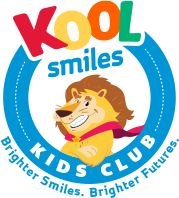
Rotten Tooth Removal
“Rotten teeth” is a term commonly used to describe decayed teeth. Tooth decay happens when bacteria-laden plaque mixes with sugar from food to produce harmful, tooth-damaging acid. Once a tooth has decayed, there’s a high risk of infection.
A qualified dentist can assess a rotten tooth and let you know if it needs to be removed.
If you’re worried your child may have a rotten tooth, you likely have some questions. What causes rotten teeth? What are the signs of rotten teeth? How do dentists treat rotten teeth?
What Causes Tooth Decay?
Tooth decay isn’t always the result of poor oral hygiene, and it’s often caused by a combination of factors. Common causes of tooth decay in toddlers and adolescents include:
- Deep tooth crevices
- Sugary foods
- Acidic and carbonated foods and beverages
- Poor nutrition
- Dry mouth
- Teeth grinding
- Age
- Lack of dental checkups
- And of course, poor oral hygiene habits
When it comes to oral health issues, prevention is preferable to treatment. Schedule regular checkups with your child’s dentist to keep their teeth healthy. Dentists are specially trained to spot the subtle signs of early decay, and it’s typically easier to treat decay in its earliest stages.
If your child resists going to the dentist, a Kool Smiles Kids Club partner dentist can help. Our partner dentists are kid-friendly, welcoming, and will go the extra mile to make your child’s checkups pleasant.
Early Signs of Rotting Teeth
Tooth decay – from cavities (dental caries) to rotten teeth – is usually signaled by a toothache, sensitivity to hot or cold, tooth discoloration, bad breath, or a strange taste in the mouth. If left untreated, decay can lead to a dental abscess – a collection of pus near the infected tooth.
Treatment Options for a Rotten Tooth
A general dentist can clean and treat the infected area, or remove the rotten tooth, if necessary. If the tooth does need removing, the dentist may use a sedative (like laughing gas) alongside the local anesthetic, which numbs the treatment area.
A space left by an extracted tooth can cause issues with speech and eating. The dentist may recommend a:
- Root canal, where the infected root is cleaned, and the area is sealed with a crown. The dentist may also do a root canal with a filling if the tooth doesn’t need to be removed.
- Bridge, which is an artificial tooth that attaches to the adjacent teeth and fills the space left by the extracted tooth. Bridges are typically made of metal and porcelain.
Find the Right Dentist for Rotten Tooth Removal
Kool Smiles Kids Club has a network of partner dentists who are committed to helping families access top-quality, affordable dental care for their children.
Our partners accept Medicare, TRICARE, CHIP (formerly SCHIP), and most major insurance plans. For families who are uninsured or underinsured, Kool Smiles’ partner dentists accept cash, credit, and CareCredit.
